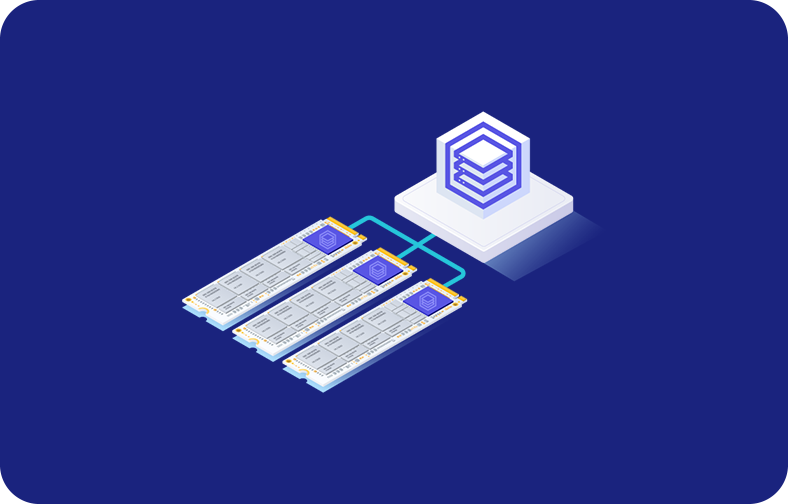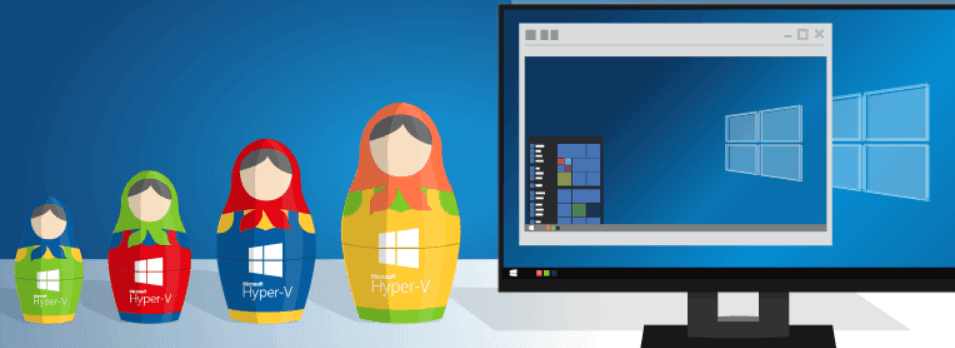VPS Nested Virtualization

Nested Virtualization — the ability to run a hypervisor on a virtual machine — has been a hot topic. This is a pretty exciting technology, and it offers some great benefits for developers, testers, or someone wanting to provide a niche service. The natural scenario when we first announced nested Virtualization was to run a hypervisor in a virtual machine. This is already possible, and if you want to do this today, you need An ARM64 or an x86 processor with 64 bits of support for Virtualization, Microsoft Windows Insider preview build 15045 or later, and Windows 10 Device Portal (instructions). This still works, but what we really wanted to deliver was clarity on running Hyper-V Containers in a VM. Imagine creating isolated testing environments on your own VPS or offering pre-configured VPSs specific to Android emulation or GPU-intensive tasks. These possibilities are enticing, offering convenience and customization in a virtualized world.
However, the picture isn't entirely rosy. Concerns regarding performance overhead, security vulnerabilities, and resource limitations linger. Implementing nested Virtualization adds another layer of complexity, potentially impacting the underlying VPS's performance. Security becomes a juggling act, ensuring both the primary and nested VMs are secure. And let's not forget the resource crunch – nested VMs draw upon the already allocated resources of the parent VPS, raising concerns about their viability for resource-intensive tasks. As we navigate the evolving landscape of cloud computing, understanding the benefits and challenges of VPS nested virtualization is crucial for making informed decisions.
Virtualization Vs. Nested Virtualization
| Feature | Virtualization | Nested Virtualization |
| Definition | Running VMs on a physical host | Running VMs within VMs |
| Layers | Single | Two or more |
| Complexity | Lower | Higher |
| Performance | Higher | Lower (potentially) |
| Use cases | Broad | Specific, advanced scenarios |

What is Virtualization
Imagine splitting a powerful computer into several smaller, independent ones. That's the magic of Virtualization! It uses software to carve up a single physical machine's resources (CPU, memory, storage) into multiple isolated virtual machines (VMs). Each VM acts like its own dedicated computer, running its own operating system and applications without interfering with others. This allows you to:
Definition: Realizing Virtual Machines (VMs) on a physical host machine, in which a sole physical server is controlled into multiple isolated virtual servers, each running its own operating system and applications.
Purpose: Increased server utilization, consolidation of resources, greater agility, isolation of workloads, improved disaster recovery… you know, just a few of the reasons you chose to virtualize your data center. All these benefits are what made you know that the journey was worth it in the first place.
How it works: A hypervisor, a software layer, abstracts the physical hardware and presents virtualized resources to each VM.
Example: Running multiple web servers on a single physical machine using a hypervisor like VMware, Hyper-V, or KVM.
Nested Virtualization
Imagine building virtual apartments inside an existing physical apartment complex. That's essentially nested Virtualization! It lets you run virtual machines (VMs) within other VMs, creating isolated and flexible environments for specialized tasks like software testing or running resource-intensive apps. While more complex than standard Virtualization, it adds another layer of possibilities for advanced users. Think of it as a powerful tool for creating tailored virtual realities within your existing virtual world.
Definition: Running VMs within VMs. Imagine creating a virtual server on your physical server and then creating additional virtual servers on that virtual server.
Purpose: Advanced use cases like testing software in isolated environments, creating layered development environments, running specific guest VMs requiring hardware features, etc.
How it works: The outer VM's hypervisor needs to support nested Virtualization and expose hardware virtualization capabilities to the nested VM.
Example: Testing a mobile app that requires specific hardware features not available on the main physical server. You create a virtual server with those features and run the app-testing VM within it.

What is the difference between Virtualization and Nested Virtualization?
Virtualization is like carving multiple efficient studios from a single sprawling mansion. It splits the physical resources of a single machine into isolated virtual machines (VMs), each with its own operating system and applications. This approach maximizes hardware utilization, improves server agility, and provides isolation for different workloads. Imagine running several web servers on a single physical machine, each completely independent and secure.
Nested Virtualization takes this concept a step further. Think of it as building additional apartments within each virtual studio. This allows you to create VMs within existing VMs, essentially creating nested layers of virtual environments. This complexity unlocks advanced use cases like testing software in highly specific environments, building layered development ecosystems, or even running VMs requiring specific hardware features not available on the main server. While it requires more setup and management, nested Virtualization offers immense flexibility and isolation for specialized tasks. It's like having a dedicated virtual workspace within your existing virtual studio, perfect for tinkering with sensitive projects or running demanding software.
In essence, both virtualization and nested virtualization create virtual environments, but the difference lies in the number of layers and the complexity involved. Virtualization offers a broader range of applications, while nested Virtualization caters to specific, advanced scenarios demanding deeper isolation and customization.

Top Virtual Machines that Support Nested Virtualization
Let's dive deeper into the paragraph you provided and explore the world of nested VMs, focusing on the two giants: Hyper-V and KVM.
Imagine a regular virtual machine (VM) as a self-contained apartment building. Now, with nested Virtualization, you can create individual apartments within each apartment in that building. This allows you to build complex and isolated environments for specialized tasks. Think of it as having dedicated virtual labs for software testing, development sandboxes, or even running VMs requiring specific hardware features not available on the main server.
Kernel-based Virtual Machine (KVM) is an open-source and complimentary hypervisor integrated within the Linux kernel. Renowned for its rapid performance and efficient utilization of resources, KVM supports the hosting of numerous virtual machines simultaneously. Additionally, it boasts a commendable history of compatibility with a wide range of hardware. KVM supports nested Virtualization, making it a popular choice for cloud providers and developers who value flexibility and community support.
Hyper-V represents Microsoft's proprietary hypervisor technology, integrated within Windows Server at no additional cost. This platform is designed with precision to facilitate flawless compatibility with Microsoft's array of offerings, such as Azure and Active Directory. It stands as a perfect choice for organizations heavily reliant on Microsoft's technological infrastructure. Moreover, Hyper-V offers support for nested Virtualization, establishing a solid and secure foundation for complex workloads.
Choosing the Right Champion:
The best choice between Hyper-V and KVM depends on your specific needs and environment:
-
Openness and Flexibility: If you prioritize open-source technology, community support, and a wider range of hardware compatibility, KVM might be the better fit.
-
Integration and Security: If you're heavily invested in the Microsoft ecosystem and value tight integration with Azure and Active Directory, Hyper-V might be the stronger option.
-
Performance and Scalability: Both Hyper-V and KVM offer excellent performance and scalability, so the decision might come down to specific benchmark comparisons and your hardware configuration.
Guide to Using KVM Nested Virtualization
Ever craved even more virtual flexibility? Then, nested Virtualization with KVM might be your answer! Imagine running isolated virtual environments within another VM, perfect for testing delicate software, building layered development setups, or squeezing the most out of your hardware.
Type this command prompt into your system, and we give two different commands for AMD and Intel Processor.
| AMD | cat /sys/module/kvm_amd/parameters/nested |
| Intel | cat /sys/module/kvm_intel/parameters/nested |
Check your nested virtualization support by looking for "1" or "Y" in the output; "N" or "0" signifies its absence.
Configuring KVM Nested Virtualization on AMD Processors
1. Halt currently active virtual machines.
2. Deactivate kvm_amd using the following command:
sudo modprobe -r kvm_amd
3. Activate the nested virtualization functionality with this command:
sudo modprobe kvm_amd nested=1
Note: Nested Virtualization is temporarily enabled and will automatically cease upon host system reboot.
Configuring KVM Nested Virtualization on Intel Processors
1. Halt currently active virtual machines.
2. Deactivate the kvm_amd module using the following command:
sudo modprobe -r kvm_intel
3. Activate the nested virtualization functionality with this command:
sudo modprobe kvm_intel nested=1
Note: Nested Virtualization is temporarily enabled and will automatically cease upon host system reboot.
Guide to Using Hyper-V Nested Virtualization
Microsoft's Hyper-V, known as a hypervisor, enables the establishment of virtualized software and hardware settings. To initiate nested virtualization within Hyper-V, follow these straightforward steps:
Ensure that the host system operates on Windows 10 (Anniversary Edition) or a more recent version, Windows Server 2016 or subsequent versions, or Windows Server Semi-Annual Channel.
-
Launch Hyper-V as a host.
-
Open a PowerShell command prompt with elevated privileges (run as administrator).
-
Execute the following command:
Set-VMProcessor -VMName VMNAME -ExposeVirtualizationExtensions $True
Note: Please update the <VMName> field with the correct name of your virtual machine.

Advantages and Disadvantages using Nested Virtualization
While it unlocks unique advantages, potential drawbacks demand careful consideration before implementation. Let's examine both sides of the coin.
Advantages of using Nested Virtualization
Reduced Costs
Consolidating resources by nesting VMs can be immensely cost-effective. Imagine running multiple development or testing environments within a single physical server, eliminating the need for dedicated hardware for each. This translates to lower hardware acquisition and maintenance costs.
Agile Development and Testing
Nested VMs create isolated sandboxes perfect for software development and testing. Developers can quickly spin up specific environments, test different software versions, and isolate potential issues without impacting other projects. This agility improves development speed and efficiency.
Minimal Maintenance
Unlike physical machines, nested VMs require no physical maintenance. Patching, backups, and other upkeep tasks are managed by the host virtualization layer, reducing administrative overhead and ensuring consistent environments.
Ideal for Demos and Labs
Nested VMs enable the creation of on-demand demo and lab environments. Training sessions, product showcases, and testing scenarios can be easily replicated without affecting the host system. This flexibility adds value to various organizational needs.

Disadvantages of using Nested Virtualization
Performance Penalty
While efficient, nested VMs introduce an additional layer of Virtualization, potentially impacting performance. Resources like CPU and memory are shared between parent and nested VMs, leading to potential slowdowns depending on workload intensity.
Network Complexity
Configuring network connectivity for nested VMs can be tricky. Nested VMs may require complex virtual switch and firewall configurations to ensure proper communication and security. Addressing network problems can be a protracted process, owing to the complex and stratified architecture of the network environment.
Technical Expertise Required
Nested Virtualization requires deeper technical knowledge than standard Virtualization. Configuration, troubleshooting, and security considerations add a layer of complexity that may not be suitable for all users.
Security Concerns
With nested VMs, a security breach in one VM can potentially compromise others. Robust security measures are crucial to isolate and protect nested VMs, requiring additional effort and expertise.
Nested Virtualization offers unique advantages in terms of cost reduction, development agility, and resource efficiency. However, the potential for performance issues, network complexity, and security concerns demands careful evaluation before implementation. Weighing the pros and cons and ensuring the necessary technical expertise is essential for a successful nested virtualization experience.

When to Use Nested Virtualization?
Though virtualization is a technology with a proven track record, there exists a possibility that organizations are not entirely cognizant of the advantages nested virtualization can provide. This robust mechanism enables the operation of several virtual machines (VMs) within a singular VM, presenting distinct benefits for specific applications.
Nested Virtualization truly shines when companies need scalable and isolated environments for software testing, development, quality assurance, demos, or proof-of-concept projects. However, its versatility extends beyond these common scenarios, offering potential solutions for various business needs.
In essence, while standard Virtualization offers a solid foundation, nested Virtualization unlocks a whole new level of flexibility and isolation, making it a valuable tool for organizations seeking to optimize their virtual environments.
Are you craving ultimate flexibility and control within your virtual environments?
Look no further than VPSServer, the champion of nested virtualization! We are not merely providing a Virtual Private Server; we are granting you access to an expansive digital terrain, prepared for customization according to your precise requirements.

Why Choose VPSServer for Nested VMs?
-
Unleash Unlimited IOPS: Break free from performance bottlenecks with our industry-leading, uncapped IOPS. Your nested VMs will scream with lightning-fast read/write speeds, ensuring seamless operation even under heavy workloads.
-
Tame the Beast with High-Performance CPUs: Power through demanding nested VM configurations with our cutting-edge CPUs. We guarantee unparalleled speed and responsiveness, letting you run even the most complex workloads with ease.
-
Find Your Perfect Match with Diverse Server Types: Whether you need a nimble development environment or a robust testing platform, we have the server type for you. Choose from a wide range of options to perfectly match your nested VM requirements.
-
Pre-Configured Convenience: Linux or Windows, Your Choice: Save precious time and resources with our pre-configured Linux and Windows options. Get your nested VMs up and running instantly, focusing on what matters most - your projects.
-
KVM Technology - The Powerhouse of Flexibility: Experience the stability and efficiency of KVM virtualization, the perfect foundation for your nested VM architecture. Enjoy superior resource management and unmatched performance.
-
Network Like a Pro with Networking Excellence: Don't let sluggish connectivity impede your progress. Our robust network infrastructure guarantees smooth communication between your nested VMs, ensuring seamless operation and collaboration.
-
NVMe Storage - Blazing-Fast and Reliable: Store your nested VMs on our cutting-edge NVMe storage, experiencing unparalleled speed and data integrity. Access your virtual environments instantly and enjoy peace of mind knowing your data is safe and secure.
Don't settle for ordinary VPS solutions. Take control and unlock the true potential of nested virtualization with VPSServer.
Frequently Asked Questions
Can I use nested Virtualization on a virtual private server (VPS)?
This depends on your VPS provider and its specific offerings. Some providers, like VPS Server, explicitly support nested Virtualization on their VPS plans, while others might not. Always check with your provider's documentation or contact their support team to confirm their capabilities.
Why would someone use nested Virtualization on a dedicated server from a web hosting provider?
This functionality offers several advantages:
Testing and Development: Developers can use nested Virtualization to create isolated testing environments that mimic complex production systems.
Education and Training: Training providers can use nested Virtualization to give students practice in managing different operating systems and network configurations without requiring multiple physical machines.
Software Compatibility: If you need to run older software that may not be compatible with your primary operating system, nested Virtualization allows you to isolate it within a separate.
Is it possible to a shared hosting plan with a web hosting service to implement nested Virtualization or need a VPS or dedicated server?
Shared hosting environments typically do not permit nested Virtualization. The hypervisor (software that manages VMs) is shared among users, and allowing nested Virtualization would give users too much control, potentially jeopardizing security and resource allocation for others on the shared server. To have dedicated access to nested Virtualization, you would need a VPS (Virtual Private Servers) hosting plan or a dedicated server.
What are the differences between VPS hosting providers vs dedicated server providers when using nested Virtualization?
Here's a breakdown of the differences:
Resource Allocation: WUtilizing a Virtual Private Server (VPS) ensures an allocated share of the physical server's capacities, though it is important to note that the hardware remains collectively utilized by other VPS entities. A dedicated server offers complete ownership of all physical resources. If you need maximum performance for the nested VMs, a dedicated server is preferred.
Control: Dedicated servers usually give you full root access to the operating system, while VPS systems might have some limitations and pre-installed software for management. This additional control is essential for setting up nested Virtualization.
Cost: Dedicated servers are generally more expensive than VPS hosting plans due to the exclusivity of resources.
Besides just enabling nested Virtualization, what are other factors to consider when choosing between shared and dedicated hosting options?
Here are some important factors to keep in mind:
Website Traffic: Shared hosting is great for smaller, low-traffic websites. However, as traffic grows, your site may outpace shared resources, leading to slower load times. Dedicated hosting guarantees resources to handle significant traffic spikes.
Security Needs: Dedicated hosting provides enhanced segregation compared to shared hosting, safeguarding against the potential risks posed by the activities of other users on a communal server. For those managing sensitive information, dedicated hosting is frequently recommended due to its superior security measures.
Customization: Shared hosting generally has limitations on software and configurations you can use. Dedicated servers give you the freedom to build your setup with specific software and tools.
Budget: Shared hosting is the most cost-effective option, ideal for startups and personal projects. Dedicated hosting will involve higher costs but aligns with larger web projects and specific resource-heavy needs.
Can I enable nested Virtualization on a typical shared web hosting plan?
Most likely, no. Shared web hosting plans usually don't provide the level of access needed to enable nested Virtualization. This feature typically requires direct control over the hypervisor and hardware, which is often restricted for security and resource management reasons in shared hosting environments.










